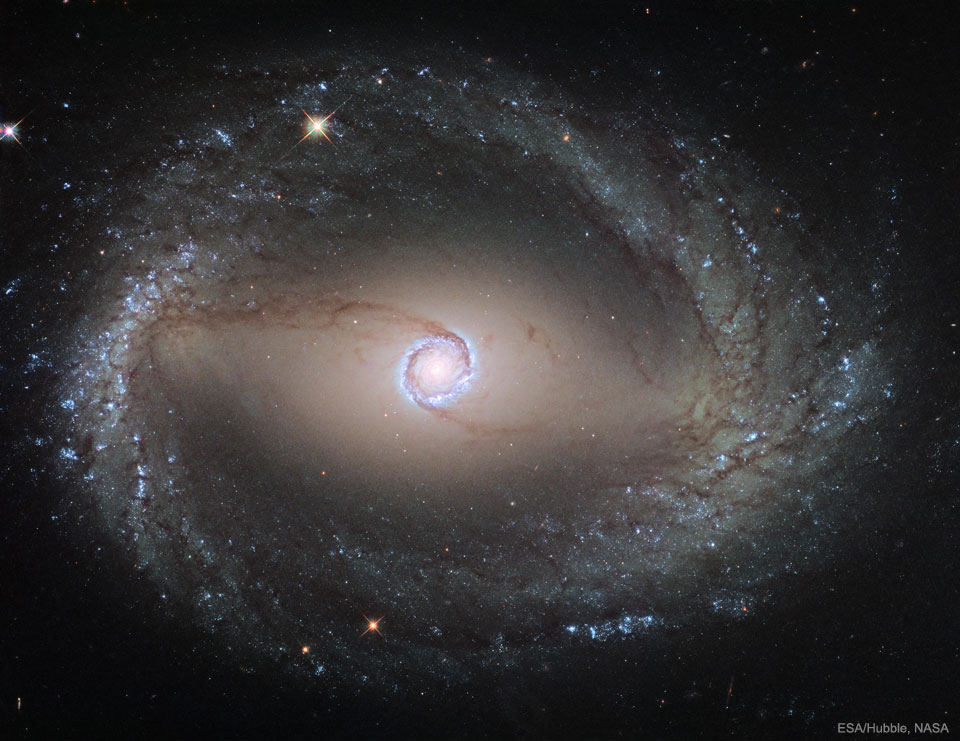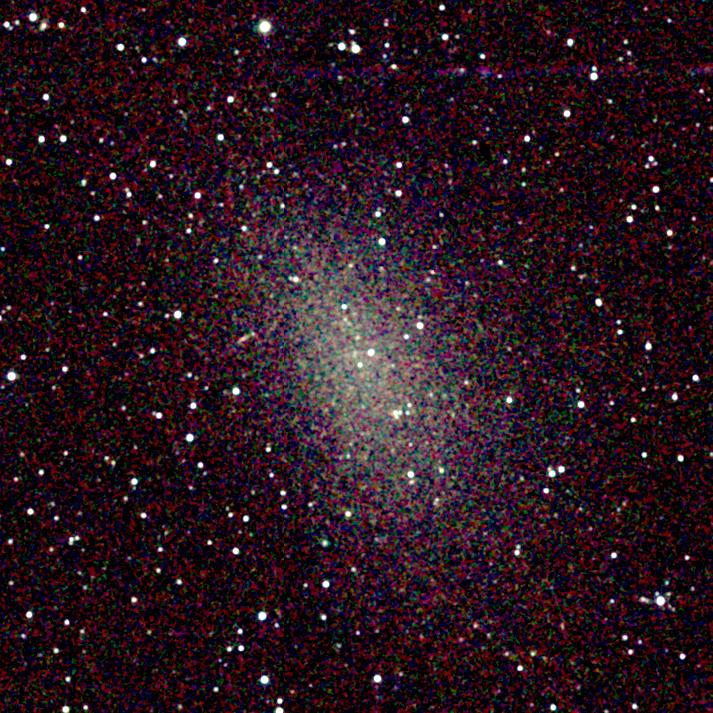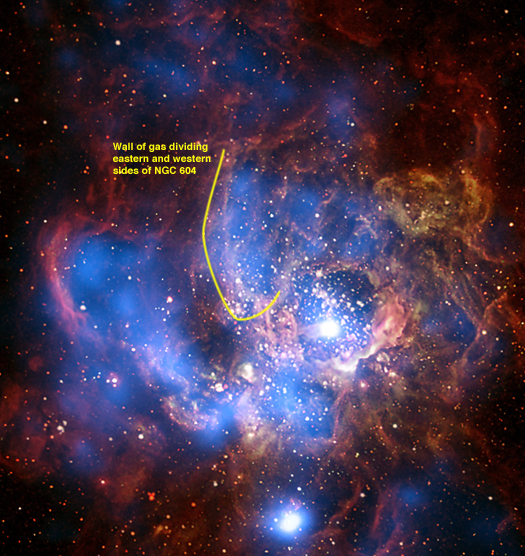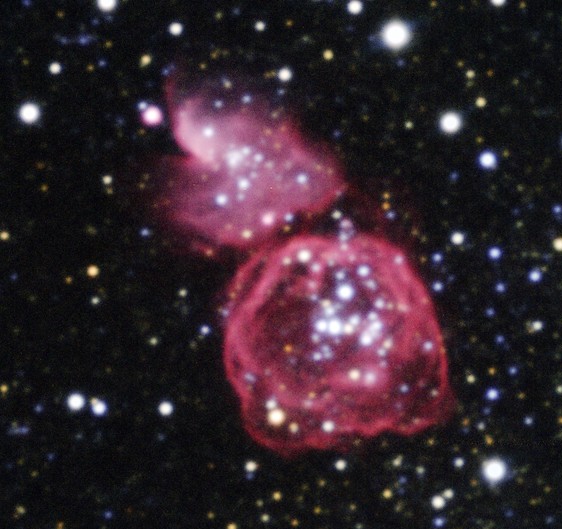First of all, this is a lovely APOD!


Let's try to describe NGC 6822 and, well, "classify" it! Right away we must note that NGC 6822 is a small, light-weight dwarf galaxy, but it does have some interesting structures. Let's compare it with the Large Magellanic Cloud, which is a "small" galaxy but much bigger and heftier than NGC 6822.
NGC 6822. Photo: Dietmar Hager, Eric Benson.
Two things are immediately obvious when you compare the (infrared) image of the Large Magellanic Cloud and Dietmar Hager and Eric Benson's picture of NGC 6822. Both NGC 6822 and the LMC are barred galaxies, with an elongated straight segment running through their centers.
And both the LMC and NGC 6822 have what we might call bar-end enhancements. Things "flare out" at the ends of the bars.
Compare the structures of NGC 6822 and the LMC with the old, (probably) completely non-starforming galaxy NGC 936:
Wait, you say, why does NGC 936 look like a round piece of candy wrapped in paper? Where is the bar? Well, the bar grew old and merged with the surrounding disk and there used to be a ring in the center of the bar which also grew old and merged with the surrounding disk. See here:
Note that NGC 1512 has a very bright inner ring (certainly surrounding a supermassive black hole

) at the center of its bar. NGC 4394 also has a ring and a black hole, but there is not a lot of star formation in the ring. Note the enhanced bar ends of both galaxies.
Note, too, how both NGC 1512 and NGC 4394 have outer rings surrounding their bars. It is as if the enhanced star formation at the ends of the bars produced "arms" that curved inwards until they met each other and formed a ring. (Or perhaps they overlap to form the appearance of a ring). Note that the LMC displays large bar end enhancements that curve inwards, as if they they were reaching for each other to try to form a ring.
And NGC 6822? There are things going on at the ends of the bar in NGC 6822, too.
1= Young blue bar without any mass concentration in its center
2= Bar-end enhancement
3= Bar-end enhancement
4= The beginnings of a spiral arm (maybe?)
5= Clump of blue stars some distance from the main body of NGC 6822
6= The beginnings of a yellow disk
7= Enhanced star formation at the bar end
So what will happen when NGC 6822 runs out of gas and stops forming stars? (Although I read somewhere that NGC 6822 sits in a rich gas cloud and has a lot of star forming material.) Well, I guess it might turn into one of those innumerable shapeless yellow dwarf spheroidal galaxies, the galactic "plankton" of the Universe!
That's it for me! Johnny, I tried to insert text into my annotated image, but I wasn't able to produce any text in there!
Ann
 NGC 6822: Barnard's Galaxy
NGC 6822: Barnard's Galaxy







